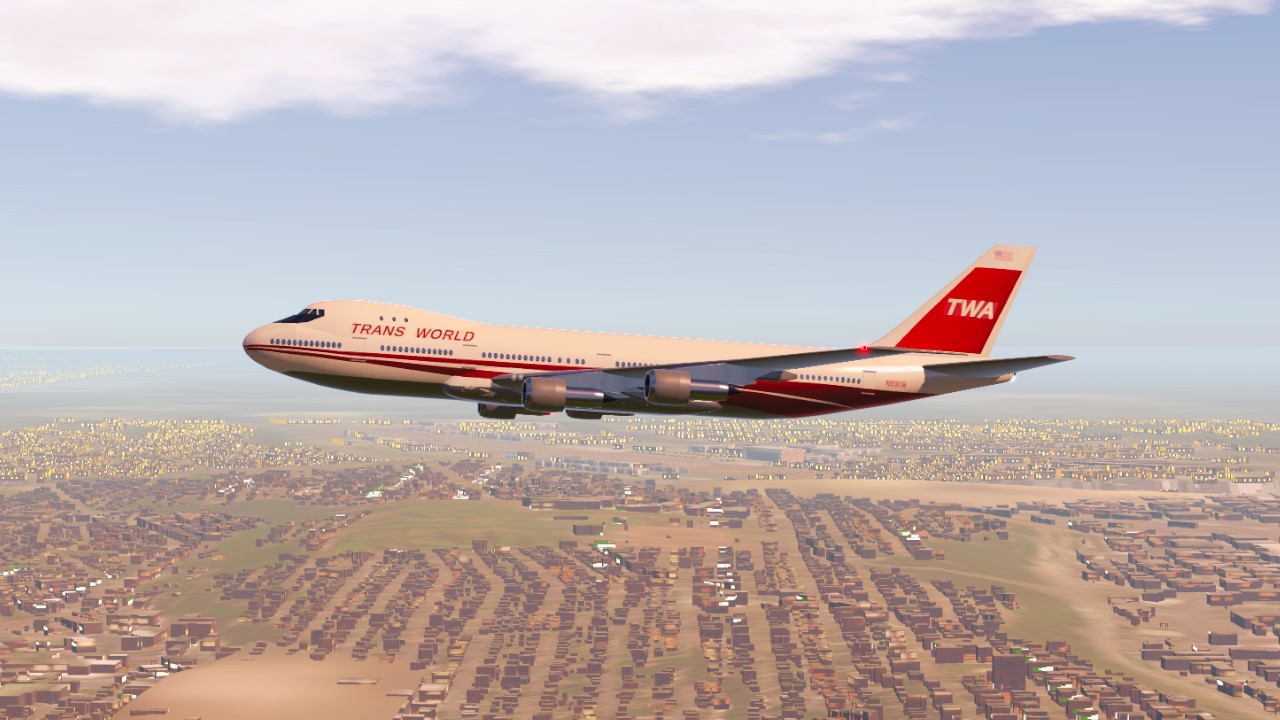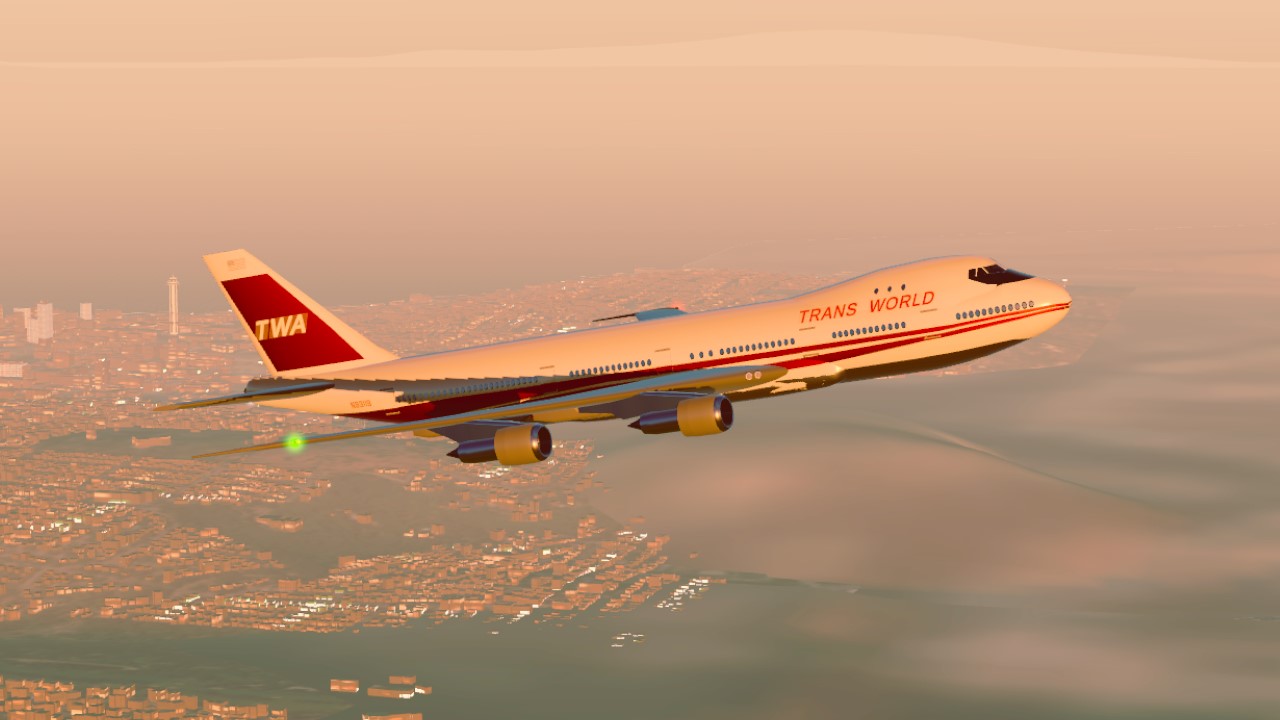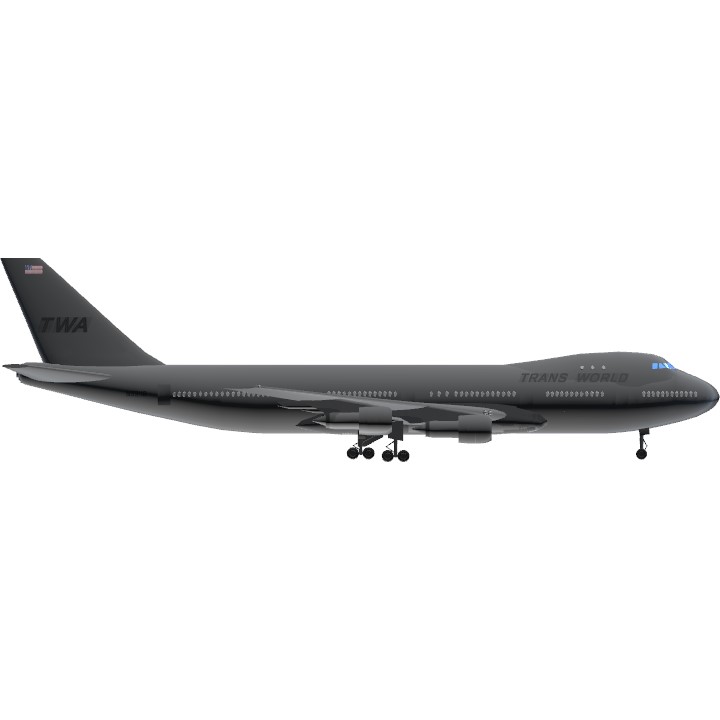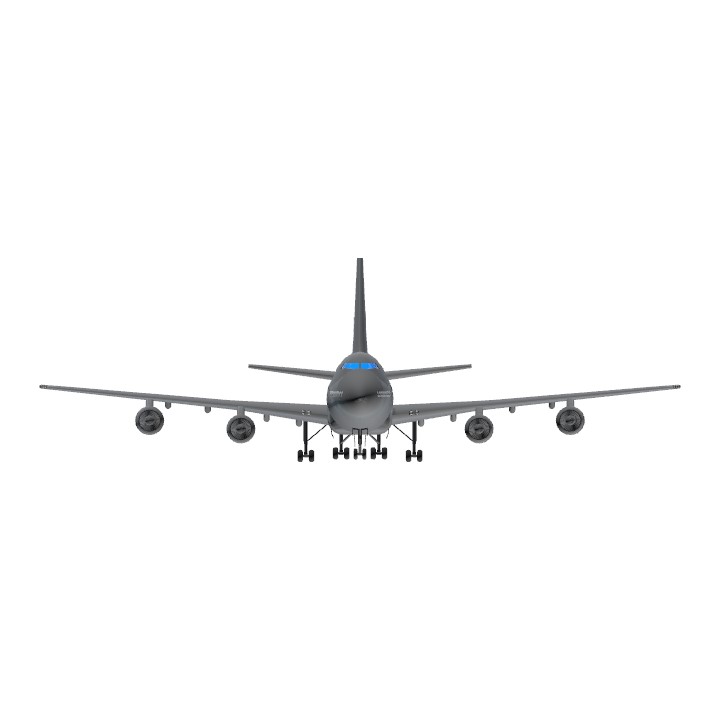Boeing 747:

A Boeing 747-200 operated by Iberia
The Boeing 747 is a long-range wide-body airliner designed and manufactured by Boeing Commercial Airplanes in the United States between 1968 and 2023. After the introduction of the 707 in October 1958, Pan Am wanted a jet 2+1⁄2 times its size, to reduce its seat cost by 30%. In 1965, Joe Sutter left the 737 development program to design the 747. In April 1966, Pan Am ordered 25 Boeing 747-100 aircraft, and in late 1966, Pratt & Whitney agreed to develop the JT9D engine, a high-bypass turbofan. On September 30, 1968, the first 747 was rolled out of the custom-built Everett Plant, the world's largest building by volume. The 747's first flight took place on February 9, 1969, and the 747 was certified in December 1969. It entered service with Pan Am on January 22, 1970. The 747 was the first airplane called a "Jumbo Jet" as the first wide-body airliner.
The 747 is a four-engined jet aircraft, initially powered by Pratt & Whitney JT9D turbofan engines, then General Electric CF6 and Rolls-Royce RB211 engines for the original variants. With a ten-abreast economy seating, it typically accommodates 366 passengers in three travel classes. It has a pronounced 37.5° wing sweep, allowing a Mach 0.85 (490 kn; 900 km/h) cruise speed, and its heavy weight is supported by four main landing gear legs, each with a four-wheel bogie. The partial double-deck aircraft was designed with a raised cockpit so it could be converted to a freighter airplane by installing a front cargo door, as it was initially thought that it would eventually be superseded by supersonic transports.
Boeing introduced the -200 in 1971, with uprated engines for a heavier maximum takeoff weight (MTOW) of 833,000 pounds (378 t) from the initial 735,000 pounds (333 t), increasing the maximum range from 4,620 to 6,560 nautical miles [nmi] (8,560 to 12,150 km; 5,320 to 7,550 mi). It was shortened for the longer-range 747SP in 1976, and the 747-300 followed in 1983 with a stretched upper deck for up to 400 seats in three classes. The heavier 747-400 with improved RB211 and CF6 engines or the new PW4000 engine (the JT9D successor), and a two-crew glass cockpit, was introduced in 1989 and is the most common variant. After several studies, the stretched 747-8 was launched on November 14, 2005, using the General Electric GEnx engine first developed for the 787 Dreamliner (the inspiration for the -8 in the name), and was first delivered in October 2011. The 747 is the basis for several government and military variants, such as the VC-25 (Air Force One), E-4 Emergency Airborne Command Post, Shuttle Carrier Aircraft, and some experimental test aircraft such as the YAL-1 and SOFIA airborne observatory.
Initial competition came from the smaller trijet widebodies: the Lockheed L-1011 (introduced in 1972), McDonnell Douglas DC-10 (1971) and later MD-11 (1990). Airbus competed with later variants with the heaviest versions of the A340 until surpassing the 747 in size with the A380, delivered between 2007 and 2021. Freighter variants of the 747 remain popular with cargo airlines. The final 747 was delivered to Atlas Air in January 2023 after a 54-year production run, with 1,574 aircraft built. As of October 2025, 65 Boeing 747s (4.1%) have been lost in accidents and incidents, in which a total of 3,746 people have died.
Trans World Airlines :

TWA logo (Late 1995–2001)

A Boeing 747-100 of TWA at Heathrow Airport in 1984
Trans World Airlines (TWA) was a trunk carrier, a scheduled airline in the United States that operated from 1930 until it was acquired by American Airlines in 2001. It was formed as Transcontinental & Western Air to operate a route from New York City to Los Angeles via St. Louis, Kansas City, and other stops, with Ford Trimotors. With American, United, and Eastern, it was one of the "Big Four" domestic airlines in the United States formed by the Spoils Conference of 1930.
Howard Hughes acquired control of TWA in 1939, and after World War II led the expansion of the airline to serve Europe, the Middle East, and Asia, making TWA a second unofficial flag carrier of the United States after Pan Am. Hughes gave up control in the 1960s, and the new management of TWA acquired Hilton International and Century 21 in an attempt to diversify the company's business.
As the Airline Deregulation Act of 1978 led to a wave of airline failures, start-ups, and takeovers in the United States, TWA was spun off from its holding company in 1984. Carl Icahn acquired control of TWA and took the company private in a leveraged buyout in 1988. TWA became saddled with debt, sold its London routes, underwent Chapter 11 restructuring in 1992 and 1995, and was further stressed by the crash of TWA Flight 800 in 1996, which would become the third deadliest aviation accident in U.S. history.
TWA was headquartered at one time in Kansas City, Missouri, and planned to make Kansas City International Airport its main domestic and international hub, but abandoned this plan in the 1970s. The airline later developed its largest hub at St. Louis Lambert International Airport. Its main transatlantic hub was the TWA Flight Center at John F. Kennedy International Airport in New York City, an architectural icon designed by Eero Saarinen, and completed in 1962.
In January 2001, TWA filed for a third and final bankruptcy and was acquired by American Airlines. American laid off many former TWA employees in the wake of the September 11, 2001, attacks. TWA continued to exist as an LLC under American Airlines until July 1, 2003. American Airlines closed the St. Louis hub in 2009.
Version :
Mobile Version
Crash Version (Don't click it)
Credit :
Planes :
GalacticaAsia - B747-400[GE]
qazedcujmyhn - For Boeing 747-200 (i change this to 100 version)
Idea :
Specifications
Spotlights
- Rjenteissussy 2 days ago
General Characteristics
- Created On Windows
- Wingspan 206.8ft (63.0m)
- Length 232.0ft (70.7m)
- Height 65.7ft (20.0m)
- Empty Weight N/A
- Loaded Weight 220,605lbs (100,065kg)
Performance
- Power/Weight Ratio 0.244
- Horse Power/Weight Ratio 0.027
- Wing Loading 30.7lbs/ft2 (149.7kg/m2)
- Wing Area 7,197.3ft2 (668.7m2)
- Drag Points 43027
Parts
- Number of Parts 817
- Control Surfaces 9
- Performance Cost 4,998







@Cellado
@JP11
Before you take this plane apart you should know that this is N93118 (sister to the crashed plane N93119) and it still flies for the Iranian air force today.
First plane by 747 GA
i swear to god someone gonna make that 747 into some crash recreation💔🥀 pls hopefully not
It's a good idea to not even bring up the crash at all. Anyways looks good, your builds are really improving!
final destination theme intensifies
context: the crash in real life inspired flight 180 and how it crashed in the movie plus the group of teenagers from a high school about to go on a field trip to Paris, which was coincidentally the stopover of the real life TWA800
P.S also watched some recreation vid a long time ago about this unfortunate flight which had the fd1 theme playing in the background
@BluesynVN aw hell nah..💀
@Cuboidable have crash version i think kid will click and ............
@BluesynVN the joke is actually for those who put detachers on this
@Cuboidable Nope !!!!!!!!!!!!!!!!
Haha detachers goes tsschh
RIP twa 800... idc that this is the sister plane...